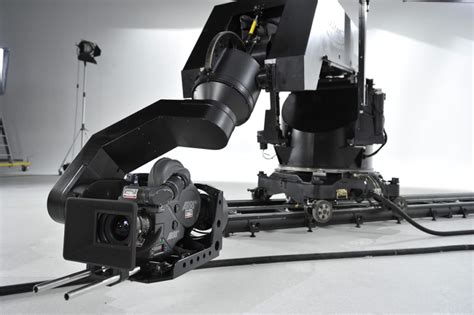Motion Control Systems: A Comprehensive Guide to Industrial Automation
Motion control systems are essential for automating machinery and processes in various industrial settings. This comprehensive guide explores the principles, components, types, applications, and best practices of motion control systems.
Introduction
Motion control systems enable precise control of movement in machines, robots, and other automated systems. They play a crucial role in industries such as manufacturing, packaging, robotics, and aerospace.
Definition and Purpose
A motion control system is a system that controls the position, velocity, and acceleration of a moving device or mechanism. It is typically composed of sensors, controllers, actuators, and power sources.


Benefits of Motion Control Systems
-
Increased productivity: Automation eliminates the need for manual labor, resulting in faster production cycles and higher output.
-
Improved accuracy: Motion control systems can achieve precise control of movement, leading to enhanced product quality and consistency.
-
Reduced costs: Automation can reduce labor costs, energy consumption, and maintenance expenses.
-
Enhanced safety: Automated systems can eliminate hazardous tasks, reducing the risk of injury to workers.
Components of Motion Control Systems
The primary components of a motion control system include:

-
Sensors: These devices monitor the position, velocity, and acceleration of the moving device.
-
Controllers: These devices process sensor data and generate control signals to the actuators.
-
Actuators: These devices convert electrical or hydraulic signals into physical motion.
-
Power sources: These devices provide the energy to operate the actuators.
Types of Motion Control Systems
Motion control systems can be classified into two main types:


-
Open-loop systems: These systems do not use feedback sensors. They rely on precise control of the input signals to the actuators to achieve desired motion.
-
Closed-loop systems: These systems use feedback sensors to monitor the actual motion and adjust the control signals accordingly. This type of system allows for more precise and accurate control.
Applications of Motion Control Systems
Motion control systems are used in a wide range of industrial applications, including:


-
Manufacturing: Assembly robots, CNC machines, and automated packaging systems.
-
Robotics: Autonomous vehicles, industrial robots, and prosthetics.
-
Aerospace: Flight control systems, missile guidance systems, and satellite positioning systems.
-
Medical technology: Surgical robots, medical imaging systems, and prosthetic devices.
Best Practices for Motion Control Systems
-
Proper system design: Carefully consider the system requirements, system dynamics, and environmental factors.
-
High-quality components: Use reliable and durable components that meet the system's performance requirements.
-
Appropriate control algorithms: Select control algorithms that match the system's characteristics and control objectives.
-
Effective tuning: Optimize the system's performance by tuning the control parameters to meet desired response characteristics.
-
Regular maintenance: Perform regular inspections, preventive maintenance, and software updates to ensure optimal performance and reliability.
Effective Strategies for Motion Control Systems
-
Model-based design: Use system models to simulate and optimize the system's performance before implementation.
-
Advanced control techniques: Employ advanced control algorithms, such as predictive control, adaptive control, and robust control, to improve system performance.
-
Integration with other systems: Seamlessly integrate motion control systems with other machine and process control systems for coordinated operation.
-
Data-driven optimization: Utilize data analytics to identify areas for improvement and optimize the system's performance over time.
Tips and Tricks for Motion Control Systems
-
Use high-resolution encoders: Encoders with higher resolution provide more accurate feedback data, improving system performance.
-
Minimize backlash: Backlash in gears or other mechanical components can introduce errors in motion control. Use preloaded gears or other techniques to reduce backlash.
-
Tune the PID parameters: The PID (proportional-integral-derivative) controller is a common control algorithm used in motion control systems. Fine-tuning the PID parameters can significantly improve system performance.
-
Filter sensor noise: Electrical noise can interfere with sensor signals. Use appropriate filters to eliminate noise and improve control accuracy.
-
Consider friction and other nonlinearities: Friction and other nonlinearities can affect the system's performance. Develop control strategies that account for these nonlinearities.
FAQs on Motion Control Systems
-
Q: What is the difference between open-loop and closed-loop motion control systems?
A: Open-loop systems do not use feedback sensors, while closed-loop systems use feedback sensors to improve control accuracy.
-
Q: What factors should be considered when selecting a motion control system?
A: Factors include system requirements, system dynamics, environmental conditions, and cost.
-
Q: How can the performance of a motion control system be optimized?
A: Optimization can be achieved through proper system design, high-quality components, effective control algorithms, appropriate tuning, and regular maintenance.
-
Q: What are some common errors that occur in motion control systems?
A: Common errors include improper system design, poor tuning, sensor noise, and mechanical backlash.
-
Q: How can motion control systems be used for industrial automation?
A: Motion control systems are used in various industrial applications, such as manufacturing, robotics, and aerospace, to automate processes and improve efficiency.
-
Q: What is the future of motion control systems?
A: The future of motion control systems includes advancements in control algorithms, sensor technology, and integration with artificial intelligence and machine learning.
Conclusion
Motion control systems are essential components of industrial automation. Understanding the principles, components, types, applications, and best practices of motion control systems is crucial for designing, implementing, and maintaining effective automated systems. By employing effective strategies, tips, and tricks, and addressing common FAQs, engineers and technicians can optimize motion control systems for improved performance, reliability, and cost-effectiveness.
